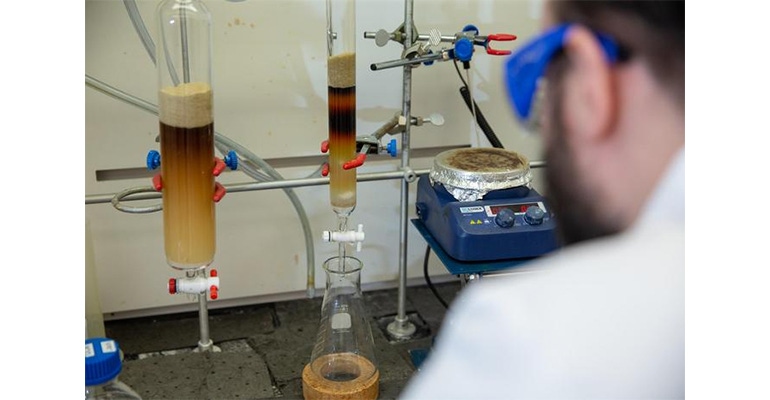Membrane-Free Battery Improves Performance, Lowers Cost
U-Cincinnati redox-flow battery design could save up to 30% of battery cost.

In their University of Cincinnati chemistry lab, Jimmy, Jiang and his team of students have engineered a groundbreaking battery with far-reaching implications for the energy storage demands of wind and solar farms. This innovative creation is poised to make a substantial impact on the field of green energy, according to Jiang. The significance lies in the ability of batteries to store renewable energy for utilization beyond its generation, a pivotal factor in optimizing wind and solar power.
Jiang emphasized the inherent mismatch between energy generation and consumption, underscoring the necessity of a device capable of temporarily storing and subsequently releasing energy when required. Their pioneering battery design has been detailed in the pages of the journal Nature Communications.
Unlike traditional car batteries containing a sulfuric acid and water mixture, Jiang's team has developed a water-free battery with a remarkable power output of nearly 4 volts. Notably, this achievement has been accomplished without the need for a membrane-separator, a costly component prevalent in such batteries.
Jiang explained the drawbacks of traditional aqueous batteries, which have limited energy density and a susceptibility to explosive decomposition when voltage thresholds are exceeded. Furthermore, membranes used in these batteries are not only expensive but also inefficient in completely segregating the positive and negative sides, resulting in unwanted crossover effects.
Despite their progress, Jiang acknowledged that there is still a long road ahead, though he remains confident in an imminent battery revolution within the next two decades. His students share this enthusiasm, with Rabin Siwakoti highlighting the enhanced energy density of their battery. Additionally, they have successfully eliminated the costly membrane component, which typically accounts for up to 30% of the battery's total expense, as noted by Jack McGrath.
Soumalya Sinha, a visiting professor at UC and co-author, stressed the global race to develop more cost-effective and efficient batteries, with their design significantly reducing material costs while maintaining performance standards.
The team, which includes lead author Rajeev Gautam, doctoral student Xiao Wang, and UC doctoral graduate Amir Lashgari, has also submitted provisional patent applications, indicating their commitment to advancing this game-changing technology.
About the Author(s)
You May Also Like





